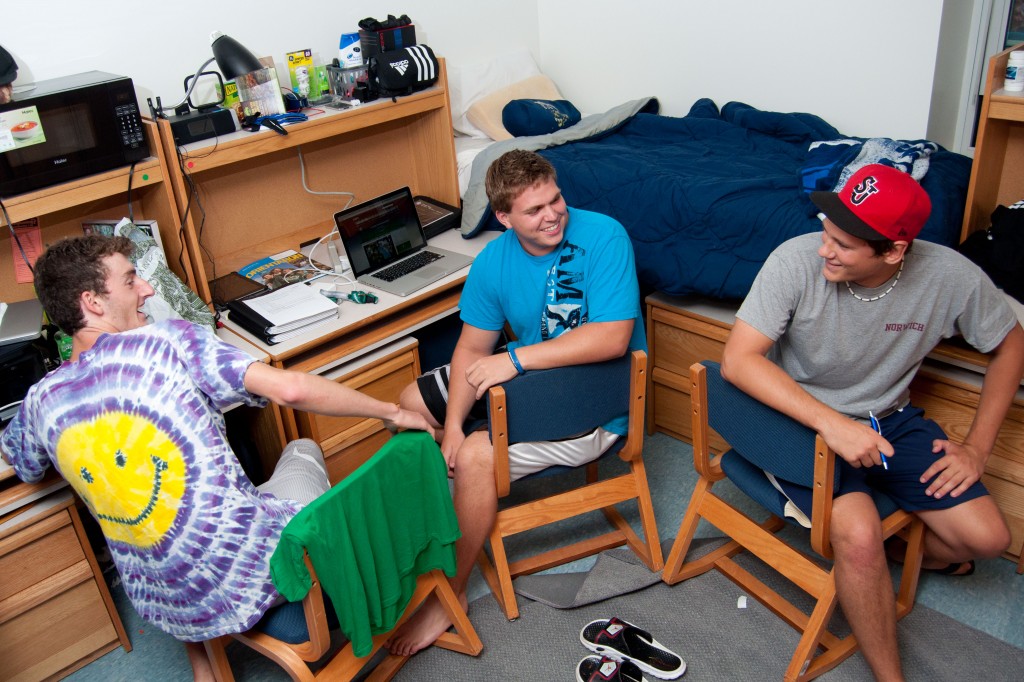
With an increase in enrollment, Binghamton University has had to house nearly 600 more students in temporary triples this year than last fall.
In fall 2011, 225 freshman were tripled in 75 rooms. This year, 810 freshman will be tripled in 270 rooms, according to Grace Hoefner, senior associate director for housing and crisis management.
According to Hoefner, the only students affected by temporary triples are freshmen and transfer students. Hoefner explained that there are more returning students who elected to remain on campus rather than moving off campus. Furthermore, more students and families are affected by the economy and therefore choose public higher education over private higher education.
“This affects the number of students who choose to enroll in the university,” Hoefner said. “Because more students than anticipated have decided to enroll in Binghamton, there is not enough room to immediately house each student in a designed-occupancy room.”
Certain living communities will be affected more directly than others by this increase in triples. Rooms in Hinman College, for example, cannot be tripled.
“The bedrooms in Hinman are too small by square footage to be able to accommodate a third bed,” Hoefner said.
The four other communities, College-in-the-Woods, Dickinson Community, Mountainview College and Newing College, all have tripled rooms. The amount of triples in a building is based on the amount of students living in a specific building.
“The Dickinson halls that only house approximately 150 students have fewer triples than the Newing halls that house 400 residents,” Hoefner said.
The general increase in student enrollment has led to the re-opening of Johnson Hall in Dickinson, according to Stephen Lo, a junior majoring in biology and a resident assistant in Cascade Hall in Mountainview.
“There’s nothing wrong with it,” Lo said. “They just cleaned it and opened it back up.”
New students who are placed in triples receive bills for a standard double room, but with reduced rates.
“This way, when a student is reassigned, he or she will not be billed an additional amount,” Hoefner said. “Rather, a credit will be issued based on the length of time the student has resided in a temporary lounge or tripled room.”
If a student remains in a triple for the entire fall semester, the reduction is made at the end of the semester. Tripled students’ bills vary with how long they are tripled and where their triple is located.
According to ResLife’s Frequently Asked Questions for New Students’ Housing Assignments, the de-tripling process to move as many students as possible into designed-occupancy rooms will begin “as soon as space in a designed occupancy room is identified.”
As outlined in a flyer from Hoefner, the de-tripling process can happen when a room becomes vacant because of students who transfer or drop out, go abroad or are no-shows at the beginning of the semester. The closest triple to the vacant room is offered the chance to de-triple, and the three occupants are given 24 hours to decide who will move out. If the occupants choose to remain tripled, the next closest room is offered the chance to de-triple.
Hoefner said because of the increased number in triples, it is likely that some will remain into the spring semester.
Because more students are expected to remain tripled into the spring semester, these students may face unique obstacles. Michelle Tejada, a junior majoring in environmental studies, lived in a triple in Champlain Hall in Dickinson last fall semester.
“I couldn’t bring all my things,” Tejada said. “It was cool when my roommates brought people over, because I could meet a lot more new people, but the room would get too crowded.”
Tripled students will not be asked to move outside their current housing community. They are automatically on that community’s waitlist for being detripled, according to Lo.
However, if a student wishes to move into another community, they may put themselves on another community’s waitlist starting Sept. 5.


